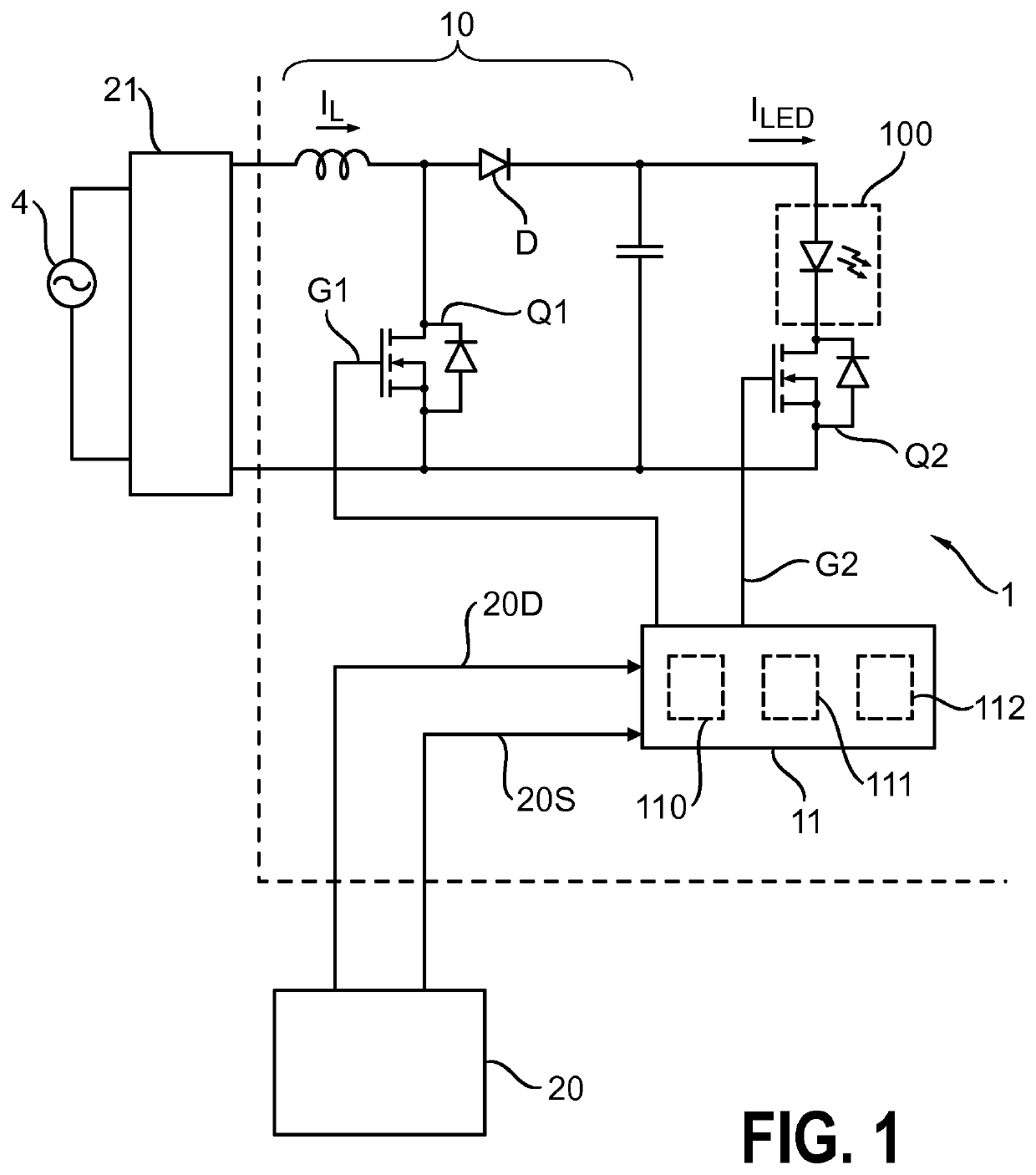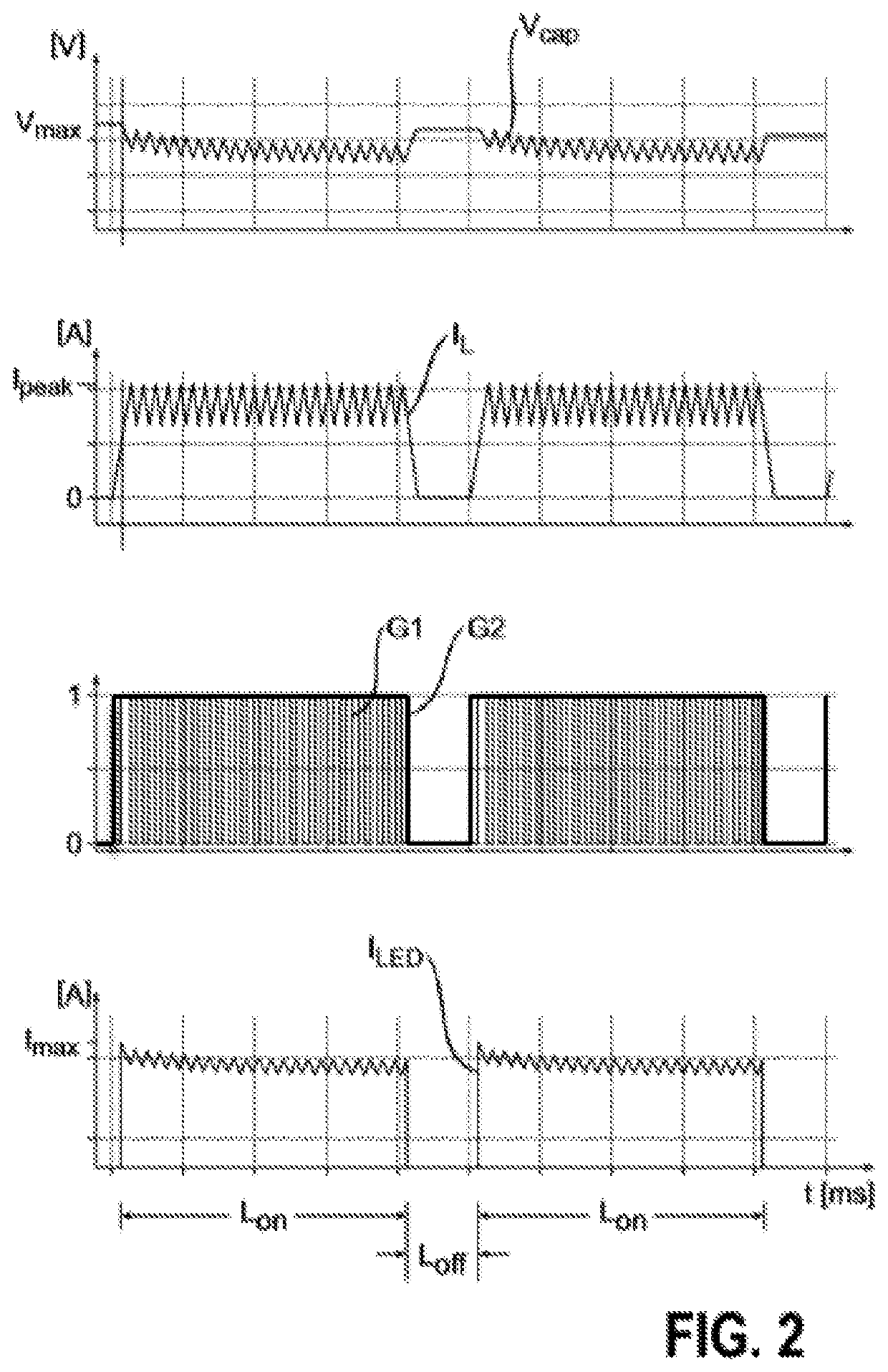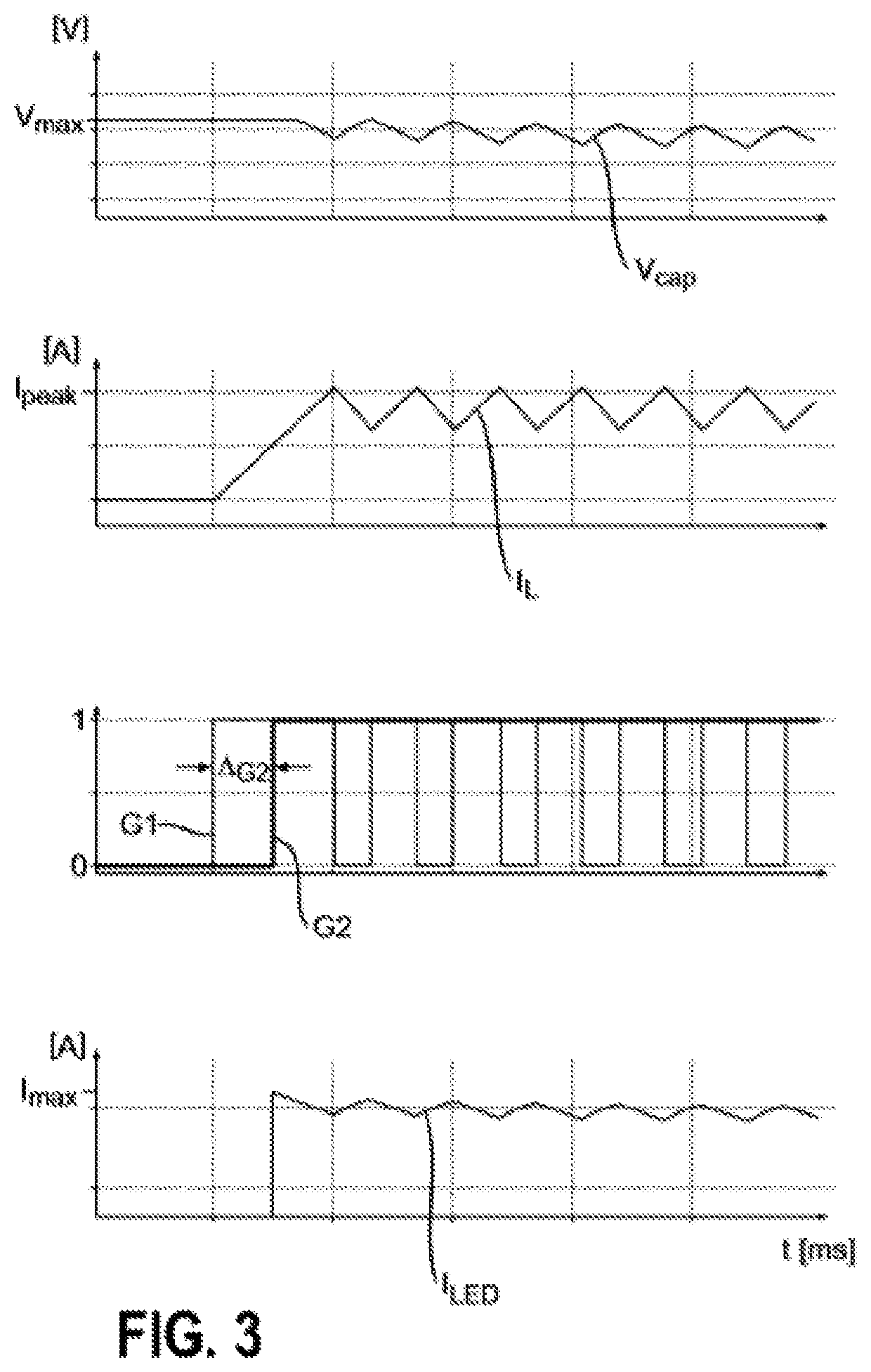LED driver
a technology of led drivers and projection arrangements, applied in the direction of optics, instruments, semiconductor lamp usage, etc., can solve the problems of reducing the quality of viewing experience, overshooting (or undershooting) of light output, and effectively wasteing ligh
- Summary
- Abstract
- Description
- Claims
- Application Information
AI Technical Summary
Benefits of technology
Problems solved by technology
Method used
Image
Examples
Embodiment Construction
[0040]FIG. 1 shows a simplified block diagram of an LED driver 1 according to an embodiment of the invention. The LED driver 1 is realized to drive an LED lighting load 100 that can comprise any appropriate number and arrangement of LEDs, and is shown in relationship to a processor 20 and power converter 21 of a DLP system. The DLP processor 20 issues a dim level 20D and a strobe request 20S to the LED driver 1. The strobe request 20S is used to regulate the “on time” of the LEDs, while the dim level 20D is used to regulate the light intensity in the projected image. Here, the LED driver 1 comprises a boost converter 10 that is provided with a rectified input from a power converter 40 driven from a mains power supply 4. The boost converter 10 comprises a known arrangement of inductor L, diode D, capacitor C, and semiconductor switch Q1, referred to as the “converter switch” in the following. In this embodiment, the switch Q1 is a MOSFET. A second semiconductor switch Q2 is arranged ...
PUM
| Property | Measurement | Unit |
|---|---|---|
| current | aaaaa | aaaaa |
| current level | aaaaa | aaaaa |
| energy transfer | aaaaa | aaaaa |
Abstract
Description
Claims
Application Information
 Login to View More
Login to View More - R&D
- Intellectual Property
- Life Sciences
- Materials
- Tech Scout
- Unparalleled Data Quality
- Higher Quality Content
- 60% Fewer Hallucinations
Browse by: Latest US Patents, China's latest patents, Technical Efficacy Thesaurus, Application Domain, Technology Topic, Popular Technical Reports.
© 2025 PatSnap. All rights reserved.Legal|Privacy policy|Modern Slavery Act Transparency Statement|Sitemap|About US| Contact US: help@patsnap.com



